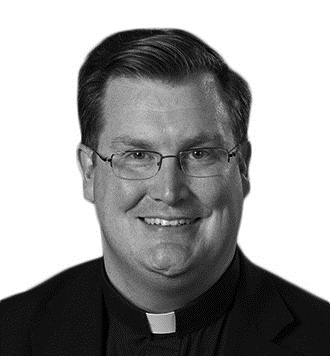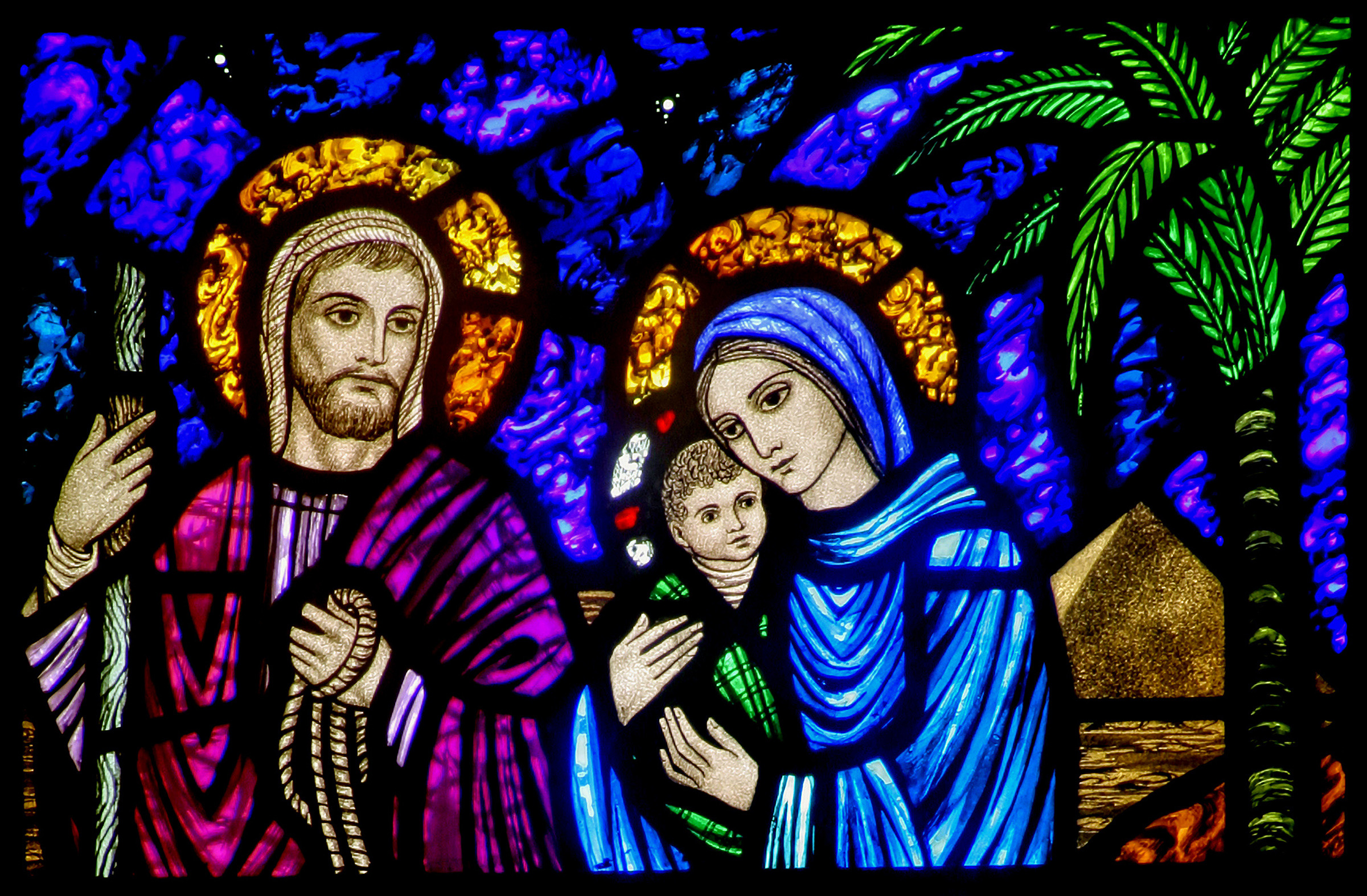On the Solemnity of the Blessed Virgin Mary, the Mother of God, we strive to understand better what it means for Mary to be, in the words of the poet Dante, “the daughter of (her) own Son.” We need to understand the importance of this truth and of sharing this part of the Gospel with others.
The teaching that Mary is the Mother of God was formally affirmed by the Council of Ephesus in the year 431. It was there that Mary was definitively recognized as being the theotokos, which is Greek for “God-bearer.” Through the whole span of the Church’s history, Mary has been recognized as being not just the Mother of Jesus’ human nature, but the Mother of the one Word made Flesh, Jesus Christ, the Son of God, who is fully divine and fully human.
As St. Paul tells us in the Second Reading for the Mass of this feast, “When the fullness of time had come, God sent his Son, born of a woman.” He does not say that Jesus’ human nature was born of a woman, but that the Son of God was born of a woman. Now, this might seem obvious to all of us, who have the benefit of 2,000 years of Tradition to support our faith in this teaching, but it is important for each generation in the Church — including ours — to consider again the teachings we hold dear, and which were often defined after long struggles and in the midst of incredible controversies. Only when we have thought these things through ourselves can we fully appreciate the profound implications they have for our lives as Catholics.
What we say about Mary’s motherhood is directly related to what we believe about Jesus Christ. To acknowledge that Mary is the Mother of God is to acknowledge that Jesus really is who he says he is: truly God and truly man.
And we are beginning to delve into the most profound implication already. What we say about Mary’s motherhood is directly related to what we believe about Jesus Christ. To acknowledge that Mary is the Mother of God is to acknowledge that Jesus really is who he says he is: truly God and truly man. The Son of God coming to live among us was not a form of play-acting. Rather, he really and truly underwent the entire human experience, with the single exception of sin, from his conception and birth — which we just celebrated on Christmas — to his death on the Cross. And then he transformed that experience and gave us new life and hope by the power of his Resurrection.
In other words, because Jesus is both God and human, he was able to restore the connection between us and God — the connection that would have otherwise been broken once and for all in the Original Sin of Adam and Eve. In becoming truly human — including taking a human mother — Jesus restored the friendship with God from which we had turned away.
Finding our shepherd voices
Now, I would like to switch gears and talk about the story of the shepherds in the Gospel reading for this feast, so that we can look at what we celebrate from a different perspective. I don’t pretend to know much about shepherds, but it seems to me that these shepherds are acting out of character. When we think of shepherds, we usually picture them as rather quiet, solitary figures, standing out in the fields, holding their staffs and watching over their flocks. In fact, that is more or less the way the angel of the Lord finds the shepherds behaving at the announcement of Jesus’ birth earlier in this chapter of Luke’s Gospel.
But in this Gospel passage, the shepherds are clearly excited. We see them going “in haste to Bethlehem,” where they encounter Mary and Joseph, and for the first time see the newly born Son of God lying in the manger. After hurrying to see Jesus, they immediately “made known the message that had been told them about this child.” They must have delivered the message very effectively, because we read that, “all who heard it were amazed by what had been told them by the shepherds.” And by now the shepherds are brimming with enthusiasm, and we see that they, “returned, glorifying and praising God for all they had heard and seen, just as it had been told to them.”
Why is it important to look at the shepherds here? Because, of all the people in the story of Jesus’ birth — which is such an important part of the story of Mary’s motherhood — I think we can most easily see ourselves in the shepherds. They were ordinary people in the eyes of the world, and yet they were entrusted with a message of the greatest importance and power. And in the Baby Jesus, they saw the living, breathing message himself: the Son of God in human flesh, lying close to his loving Mother. The shepherds saw with their own eyes what we now celebrate in faith: the Mother of God caring for her newborn Son, who was already drawing people closer to himself — and to his Mother — and, therefore, closer to their salvation.
What did the shepherds do in response to what they had heard from the angel and seen at Bethlehem? They “made known the message;” they shared this good news with others. ... The story of the shepherds provides a model for us.
And what did the shepherds do in response to what they had heard from the angel and seen at Bethlehem? They “made known the message;” they shared this good news with others. They knew that it was no ordinary baby they had just seen, and no ordinary family. And those humble shepherds, who were probably little used to public speaking or any other socializing outside their known circle of co-workers, family, and friends, shared the message of Jesus with such passion that it inspired amazement in the people!
The story of the shepherds provides a model for us. We, like they, are called by God out of the ordinary circumstances of our lives to see for ourselves what he has done to save us. Jesus’ very name, as we read in the Gospel, means, “God saves.” We are called to recognize both our need for salvation and that God has accomplished his saving work through his Son. And in bringing about our salvation, God relied upon the cooperation of Mary. She gave the Son of God the very human flesh through which he would later preach and heal and drive out demons, the same flesh that would suffer terribly and be nailed to the Cross, the same flesh that would rise again and ascend into Heaven, and the same flesh that we receive at Mass in the Holy Eucharist.
The degree to which we recognize and understand the importance of all these truths will be the degree to which we, like the shepherds, will be eager to share this message with other people.
To draw a couple of analogies here: no one who knows of an effective medicine withholds that information from a sick person. No one who knows the way to an important destination would refuse to share directions with someone who is lost. We don’t even fail to tell people about the good movies we’ve seen, or a restaurant we’ve enjoyed, or our latest exercise or diet routine. Yet we all-too-often let opportunities to give witness to the Gospel slip by. And this is the one message people really need to hear! So, I think that the shepherds’ reaction to their encounter with Jesus and His Mother Mary gives us some serious food for thought on this feast.
Mary's heart: Her true strength
And finally, we look to Mary herself in today’s Gospel. What was Mary’s reaction to all that happened? One of prayer and reflection. We read that she, “kept all these things, reflecting on them in her heart.”
Mary is certainly not a mother who is faint of heart. Yet she also knew the difference between two kinds of strength the heart can have: the false kind of strength that comes from hardening your heart and the true strength of a contemplative heart.
My own mother is fond of saying, “Parenting isn’t for the faint of heart.” Mary is certainly not a mother who is faint of heart. Yet she also knew the difference between two kinds of strength the heart can have: the false kind of strength that comes from hardening your heart and the true strength of a contemplative heart. A hardened heart shuts out the trials and suffering that inevitably come with loving deeply, while the contemplative heart loves God and others deeply and is able both to embrace the joys and to endure the trials that come with true love.
Contemplative hearts such as the Virgin Mary’s also open themselves to the greater realities of God and his presence and action in our lives. While a hardened heart is afraid of mystery, of anything that isn’t immediate, obvious, and easy, a contemplative heart embraces the mysteries of God, of human life, and of the relationship of love we have with him. We need to foster contemplative hearts within ourselves, if we are to respond to God’s presence and action in our own lives, and to share with others the Gospel message: salvation in Jesus Christ, our Lord and our God, whose holy Mother Mary we honor on this first day of the new year.
Fr. Charles Fox is a priest of the Archdiocese of Detroit currently assigned to the theology faculty of Sacred Heart Major Seminary. He is also a weekend associate pastor at St. Therese of Lisieux Parish in Shelby Township and chaplain and a board member of St. Paul Evangelization Institute, headquartered in Warren.










